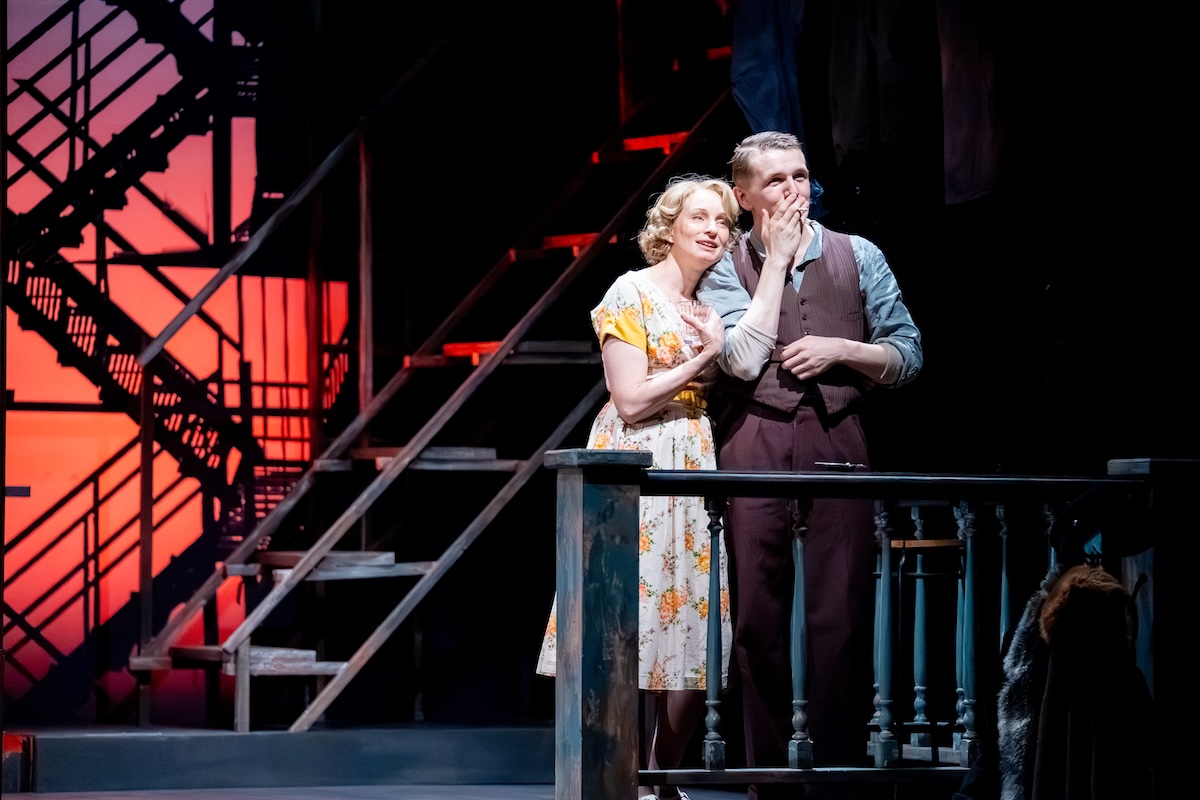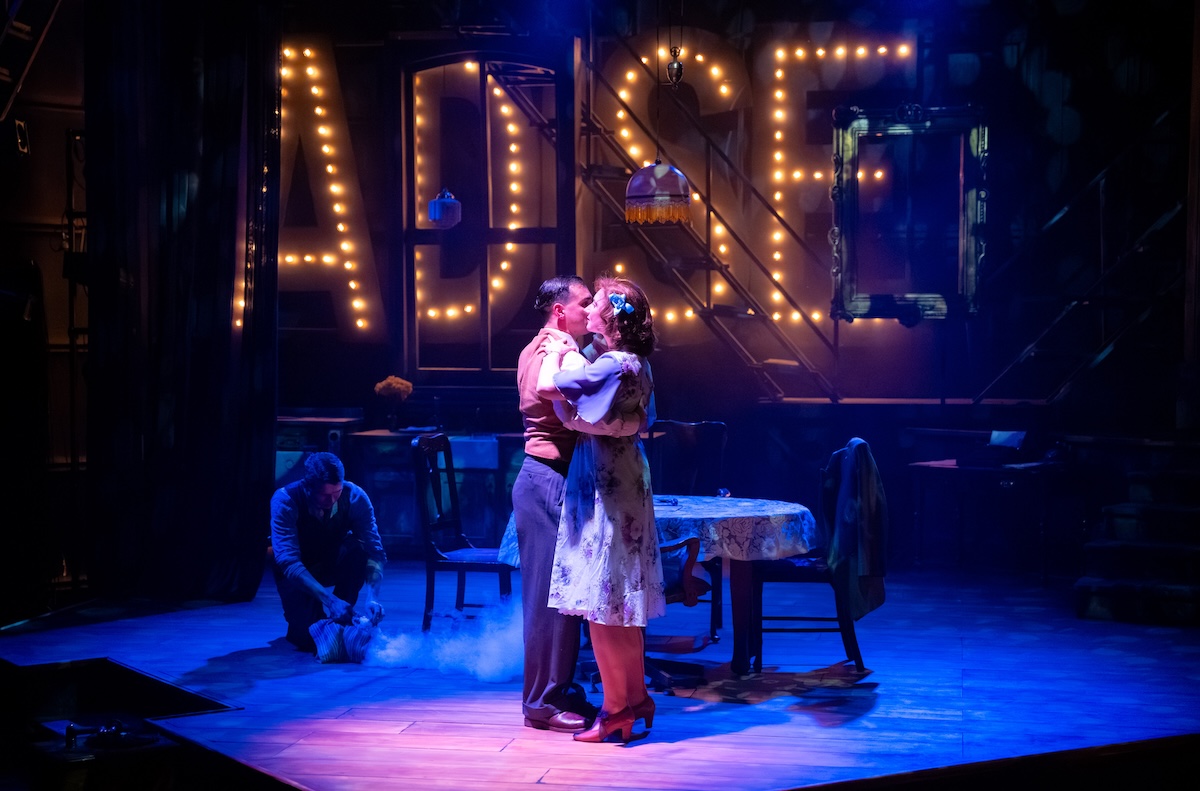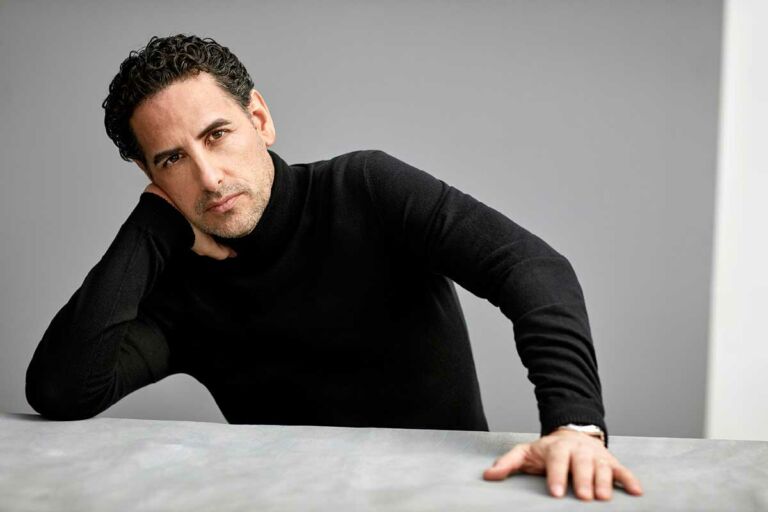In a dingy, compact apartment in swing-era St Louis, Missouri, a young man introduces himself as our narrator of this – his memory play. His is a modest dwelling – the chairs do not match, the floorboards are worn. There’s a faint whiff of desperation.
The Glass Menagerie by Tennessee Williams premiered in Chicago in 1944. With strong autobiographical elements and characters drawn from his upbringing, Williams coined the term “memory play” – an expression that would go on to describe the genre.
From the first, we are spellbound by Tom Wingfield (Laurence Boxhall), who describes his reminiscences as dimly lit, sentimental and not realistic. We are on our guard for false memories.
We learn Tom shares his miserable abode with his overbearing, histrionic mother Amanda (Ksenja Logos), his fragile sister Laura (Kathryn “Kitty” Adams), and the powerful memory of an absent father.

Ksenja Logos and Laurence Boxhall in The Glass Menagerie. Photo © Matt Byrne
Director Shannon Rush boldly helms this outstanding production. Staying true to the script, Rush eschews thoughts of modernisation, instead applying a keen attention to detail that lends interest to the long, slow-burning play.
Fearless directorial choices pay off. The smallest integral objects are almost in the way as we enter the theatre, making them impossible to ignore despite their size. Characters’ backs are frequently to the audience, even mid-dialogue, at no cost to projection or comprehension. The protagonist is physically writing his play while appearing in it, and intimate scenes are placed so far downstage as to be almost in our laps. We are inexorably drawn in.
Across the board, the performances are excellent. Boxhall’s Tom is convincing as a tortured man let down by life and emotionally blackmailed by notions of commitment.
Adams deftly brings fragility to the role of Laura, who is described as a “cripple”, with all its connotations of weakness and inadequacy.
Logos, as Amanda, is exceptional. From lilt and cadence to timing and expression, her delivery of a character so irritating and well-drawn is pitch perfect.
Jono Darby as “gentleman caller” Jim O’Connor puts the brill in Brylcreem. A latecomer to the action, he smooth-talks his way into – and then out of – the scenes, nimbly taking several hopes and dreams with him.

Jono Darby and Kathryn Adams in The Glass Menagerie. Photo © Matt Byrne
Set and costume designer Mark Thompson’s theoretically small apartment cleverly captures the claustrophobia of the script while giving the cast a large amount of physical space. Terrific costuming includes seamed stockings, frills, chiffon and 1930s tailoring.
Lighting designer Gavin Norris creates an impressively nuanced visual world with silhouettes, accents and attention-focusing devices, as Jamie Hornsby’s compositions accompany the protagonist’s recollections with a soft focus.
The time-bending scenes are technically fascinating and well executed but, by nature, imperfect devices that disrupt rather that complement the dramatic tension.
As an essential era-driven prop, the smoking of cigarettes at times looks a little awkward and is therefore distracting – not least for the resulting coughs from the audience.
The Glass Menagerie tells a sad story of familial obligation that pivots around the hopes and disappointments of unallied characters. Despite the bleakness of the tale, this is well-crafted, great theatre.
State Theatre Company South Australia’s The Glass Menagerie plays at The Odeon Theatre, Adelaide until 7 December.











Comments
Log in to start the conversation.